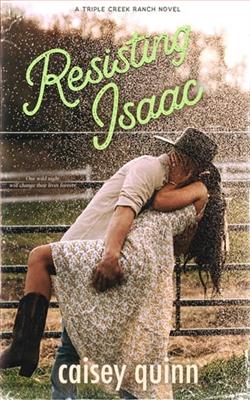Page 125 of Cry Havoc
He didn’t need to explain to her what “it” was.
Nurse Maxwell helped him up the stairs and into the club where he was shot and Gaston DuBois was killed. It was slow going on his crutches, but when he made it down the long hallway to the dining pavilion, he stood in the doorway for ten minutes replaying the events of the attack in his mind.
Ella.
That was enough. He never went back to the pavilion. Each morning, they would go directly to the pool in the darkness. He would be in the water before the sun came up.
Maxwell explained that varying forms of aquatic therapy had been in use in the United States since at least 1911. Even Franklin Roosevelt used the therapy to help treat his polio. She told him that just last year the Social Security Act was amended to include aquatic therapy as a treatment option.
He started by walking in chest-deep water. The first week that was all he could do. Two weeks later, he ditched his crutches and was swimming laps. The next morning, Maxwell slipped into the pool beside him in a swimsuit that was made for racing.
“Let’s go,”she said.
Tom had thought that, as a SEAL and surfer, he was a strong swimmer. Maxwell put him to shame, her long lean body cutting through the water with ease.
“We’ll get you there,”she said, proceeding to give him advice on technique.
Every session she would give him something new to focus on.
He grew stronger. His times improved.
Maxwell told him that she swam competitively in high school. She continued to swim in college, but, as there were virtually no sports scholarships for women like there were for men, she used the pool as a way to relax and stay in shape while earning her bachelor of science in nursing from Penn State. After graduation she volunteered to serve, just as her mother had in the Army Nurse Corps after Pearl Harbor.
Morning pool sessions were followed by afternoons in the gym. Eventually, he began jogging around the club’s polo fields. Maxwell ran with him. She was almost as impressive on the track as she was in the pool. Almost.
At least twice a week, Serrano would stop by the hospital to check on his progress and let him read after-action reports from MACV-SOG missions. Teams were being compromised and disappearing with greater frequency. The KIA and MIA numbers were increasing. Those numbers drove him harder.
He once asked Maxwell why she was going to all the extra trouble for him.
She answered that of all the wounded men she saw pass through the hospital, she had seen very few who fought to stay. And of those who did, none were allowed by their commands to remain in-country when they could be sent to higher level care in Germany, Okinawa, or the United States. Tom was different.
He also suspected Serrano was paying her with CIA contingency funds.
“I know what you are going to do when you are ready,”she said, as they hung to the side of the pool catching their breath after a morning sprint session.“You are going back to SOG. I can mend your wounds. I can assist you with recuperation. But I won’t watch you die. I’ve seen enough death. You’ll have to do that on your own.”
Without waiting for a response, she pushed herself out of the pool to towel off.
Tom swam another lap.
Just before he left a month later, after having crushed the military PT test, she had given him a folded piece of paper with a stateside address.
“If you survive,”she had said.
“Thank you—for everything.”
“Physically, you’re ready. Emotionally, I know you are hurting. Be sure and take care of what’s in here,”she said, tapping his chest. “Look after it. It’s the most important part.”
Then she kissed his cheek, turned, and left his hospital room to care for others.
That was two months ago.
Tom was back in the jungle with Quinn shortly thereafter. Colonel Singlaub had seen to it.
Tom looked at his watch again: 4:40 a.m. The Rolex made him think of Ella and the stainless bracelet he never installed.
What was she doing now?
Would she know or even care if he did not make it out?















